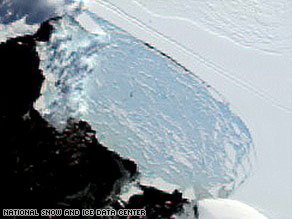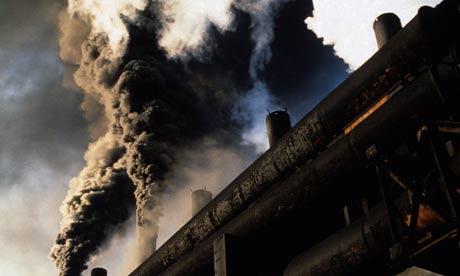/agriculture/article/33486 By Victoria Thieberger
MELBOURNE (Reuters) - Australian grape growers reckon they are the canary in the coalmine of global warming, as a long drought forces winemakers to rethink the styles of wine they can produce and the regions they can grow in.
The three largest grape-growing regions in Australia, the driest inhabited continent on earth, all depend on irrigation to survive. The high cost of water has made life tough for growers.
Some say they probably won't survive this year's harvest, because of the cost of keeping vines alive. Water prices surged above A$1,000 a megaliter last year from around A$300.
"On the back of three very ordinary years, this year is probably the worst that could have occurred with the drought and the high costs of water," said Michael de Palma, a mid-sized grower in Redcliffe near Mildura in the Murray Valley, one of the country's three big wine regions.
"In this depressed situation, growers have only two choices, stick it out as long as they can or to cut their losses and get out," said de Palma, who is part-way through a weather-influenced early harvest on his 40-hectare vineyard.
Recent rains have bypassed the country's parched inland wine regions, and have fallen half-way through the harvest in eastern Australia, too late to help the berries and instead causing a mildew-like disease.
De Palma, the chairman of Murray Valley Winegrowers, said he would wait to see the results of his harvest before deciding whether to sell up or hold on to his vineyard, which mainly supplies Foster's Group, Australia's largest wine company.
He estimated around 40 percent of grape growers in the Murray Valley who had access to water trading couldn't afford to buy water last year, while most of the others had to borrow to do so, going deeper into debt.
Industry groups estimate up to 1,000 winegrowers out of around 7,000 may be forced to leave the industry this year because their vineyards are no longer financially viable.
"There's a Darwinian economics going on at the moment, and the outcome remains to be seen," said Paul Henry, general manager of market development at Australian Wine and Brandy Corp.
"One might say we're guilty of the charge of being slow to change thus far, but the experience of this harvest will change the outlook for Australian producers."
In some regions, such as the Murray Valley, wine grape yields are down 30-40 percent.
Australia's harvest is forecast to be down on average years, which may cut into exports in the A$6 billion industry.
Wine exports total some A$3 billion. Australia is the number one supplier of imported wine in the United Kingdom with a market share of 23 percent and it is second in the United States.
The smaller 2008 vintage, made worse by a record-breaking heatwave which withered grapes on the vines, is expected to push up prices and spell the end of cheap bulk wine after a three-year glut that produced a rash of no-name brands called "cleanskins."
WARMER AND DRIER
Scientists say Australia's vast inland winegrowing districts face the greatest degrees of warming.
These are the Riverland on the Murray River in South Australia, the Murray Valley, and the Riverina on the Murrumbidgee River in New South Wales.
And it is the grape-growers in these semi-arid areas that already face the greatest hardship, with calls to rural financial counseling services soaring in recent months.
"We believe there are 800 to 1,000 growers predominantly in Murray Valley and the Riverland in South Australia who are going to have to make a decision this year about whether they stay or go," said Wine Grape Growers chief Mark McKenzie.
A landmark study by the Commonwealth Scientific and Industrial Research Organization (CSIRO) found these areas would warm by 2.5 degrees Celsius by 2030.
Last year was one of the warmest on record for southern Australia, where all of the nation's winegrowing regions lie, as well as one of the driest.
And that is enough to change harvesting times as berries ripen earlier, which can also affect their quality.
"Climate change is the biggest issue we face. Relatively small changes in temperature and precipitation do have reasonably large impacts in terms of wine style," said Winemakers' Federation Chief Executive Stephen Strachan.
"Wine is a bit of a bellwether in terms of some of the very immediate impacts you see from climate change."
According to the CSIRO, grape quality could fall by 23 percent by 2030 because of the climate changes, and suitable land for viticulture could be cut by 10 percent.
By 2050, some 44 percent of current grape-growing areas would be affected, the study found.
The solution may be for cooler climate areas, such as the bayside Mornington Peninsula south-east of Melbourne and the Yarra Valley to the east, to expand the varieties they grow.
The southern island state of Tasmania is also attracting attention as a region that could dramatically boost its grape cultivation, with its mild weather closer to that of New Zealand than the parched mainland.
Indeed, wine-growers in neighboring New Zealand are upbeat about a future that includes climate change, because higher temperatures are expected to make cold areas of New Zealand more temperate and better suited to grape growing.
CHANGING TASTES
Warmer temperatures and less rainfall will also mean changes in the grape varieties the traditional growing areas produce.
"Styles in existing regions will change," said Strachan of the Winemakers' Federation.
"Most regions can produce most grape varieties, but whether they can produce them to quality levels that the market expects is the big question."
While Australia's signature shiraz fares quite well in a hot climate, cabernet, pinot noir and merlot among the reds and chardonnay, sauvignon blanc and riesling among the whites may have a tougher time.
"Merlot is relatively intolerant of water stress, and it doesn't cope well with periods of very high temperatures," said Snow Barlow, a winemaker and the chairman of the agriculture school at Melbourne University, who co-authored the CSIRO study.
Experts say Australian growers need to experiment with tougher varieties from Spain and Sicily. Tempranillo from Spain is one of Australia's fastest-growing varieties, while along the Murray river, the Corsican grape Vermentino is being planted.
"Wine companies build up brands. Whether we can convince the world to take to Australian Sicilian varieties in same way they take to Australian shiraz, that's quite a big commercial question," said Barlow.
Barlow, who owns the boutique Baddaginnie Run vineyard nestled in the foothills of the Strathbogie Ranges in Victoria state, said climate change shaped his decisions on what varieties to plant when he started his vineyard 10 years ago.
Even so, merlot has proved problematic and he did not produce a merlot last year because of poor quality. His $20 merlot has won awards in better years.
Over time, different root stocks that are able to provide good fruit with lower water requirements will become more common.
But it can take months or years to import new varieties through Australia's strict quarantine system, and three to four years to establish new rootstock for commercial production.
For grape growers already deep in debt, that is simply too long to wait.
(Editing by Megan Goldin)
($1=A$1.11)






